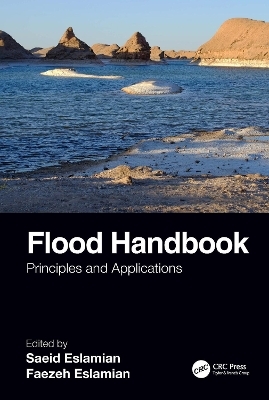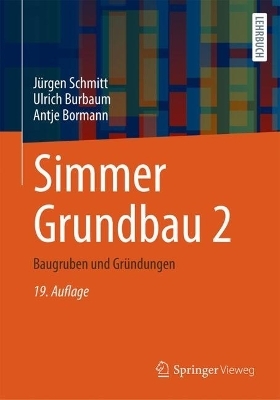
Flood Handbook
CRC Press (Verlag)
978-1-138-58493-8 (ISBN)
Floods are difficult to prevent but can be managed in order to reduce their environmental, social, cultural, and economic impacts. Flooding poses a serious threat to life and property, and therefore it’s very important that flood risks be taken into account during any planning process. This handbook presents different aspects of flooding in the context of a changing climate and across various geographical locations. Written by experts from around the world, it examines flooding in various climates and landscapes, taking into account environmental, ecological, hydrological, and geomorphic factors, and considers urban, agriculture, rangeland, forest, coastal, and desert areas.
Features
Presents the main principles and applications of the science of floods, including engineering and technology, natural science, as well as sociological implications.
Examines flooding in various climates and diverse landscapes, taking into account environmental, ecological, hydrological, and geomorphic factors.
Considers floods in urban, agriculture, rangeland, forest, coastal, and desert areas
Covers flood control structures as well as preparedness and response methods.
Written in a global context, by contributors from around the world.
Dr. Saeid Eslamian is professor of Hydrology at Isfahan University of Technology, where he heads the Hydrology Research Group in the Department of Water Engineering. His research focuses mainly on statistical and environmental hydrology and climate change. In particular, he is working on modeling and prediction of natural hazards including flood, drought, storms, wind, groundwater drawdown, and pollution for arid and semi-arid zones, particularly in urban areas. He is also a Visiting Professor at Princeton University, and University of ETH Zurich, Switzerland. He has contributed to more than 300 publications in books, research journals, and technical reports or papers in conferences. He is the Founder and Editor-in-Chief of both the International Journal of Hydrology Science and Technology and the Journal of Flood Engineering. He received ASCE and EWRI awards in 2009 and 2010 for his research. Faezeh Eslamian holds a Ph.D. in Bioresource Engineering from McGill University, Canada. Her research focuses on the development of a novel lime-based product to mitigate phosphorus loss from agricultural fields. Faezeh completed her bachelor’s and master’s degrees in civil and environmental engineering from Isfahan University of Technology, Iran, where she evalu-ated natural and low-cost absorbents for the removal of pollutants such as textile dyes and heavy metals. Furthermore, she has conducted research on worldwide water quality standards and wastewater reuse guidelines. Faezeh is an experienced multidisciplinary researcher with an interest in soil and water quality, environ-mental remediation, water reuse, and drought management.
Part I: An Introduction to Flooding
Flash Flood Definition: Characteristics, Sources and Analysis-David Archer
Geomorphoogy and Flooding-Giovanni Barrocu
Mediterranean Flooding- Samir Algamal
Arid Zone Flooding-Hassan Rezaei Sadr
Hydroelectric and Floods-R. K. Saket
Part II: Social Aspects and Guidelines
Social Aspects of Flooding-Bintul Huda Mir
Stakeholder Collaboration in Flood Risk Management-Karen Potter
Impacts of flooding on Nigeria Educational Sector and Innovative Solutions-Benjamin Anabaraonye
International Law and Policies on Floods-Sergio Peña Neira
Guidelines for Unit Hydrograph Analyses-Richard McCuen
Parst III: Past Floods
History of World Extreme Floods-Mousa Maleki
Isotope Techniques in Flood Analysis- Samir Algamal
Paleoflood and Historical Flood Hydrology-Victor R. Baker
Bankfull Stage and Flood Return Periods- Iftekhar Ahmed
Dominant Discharge of Rivers- Iftekhar Ahmed
Flood Mark Applications-Niranjan Bhattacharjee
Part IV: Food Measurement and Estimation
Regional Intensity-Duration-Frequency Curves in Algeria-Bénina Touaibia
Dynamic Curve Numbers: Concept and Application-Sara Nazif
Application of SCS-CN for Estimating Runoff on Arid Watershed-Dilip Kumar Ghose
Flood Hydrograph and Base Flow Separation using the Web Based Hydrograph Analysis Tool -Never Mujere
Part V: Flood Control and Uses
Closed Drainage Systems-Qin Qian
Flood Water Harvesting- Nasir Rather
Flood Spreading-Reza Ghazavi
Biotechnology and Flood-Resistant Rice-Saima Aslam
A Novel Groundwater Recharge using Storm water Drainage-Jayantial Patel
Part VI: Flooding and Quality Aspects
Sampling and Analytical Techniques for Flood Water Quality Monitoring-Josephine Treacy
Watershed Contamination by a Copper Mine with Flooding-Emery Coppola Jr.
| Erscheinungsdatum | 24.01.2022 |
|---|---|
| Zusatzinfo | 102 Tables, black and white; 173 Line drawings, black and white; 34 Halftones, black and white; 207 Illustrations, black and white |
| Verlagsort | London |
| Sprache | englisch |
| Maße | 178 x 254 mm |
| Gewicht | 1251 g |
| Themenwelt | Naturwissenschaften ► Geowissenschaften ► Geologie |
| Naturwissenschaften ► Geowissenschaften ► Geophysik | |
| Naturwissenschaften ► Geowissenschaften ► Hydrologie / Ozeanografie | |
| Technik ► Umwelttechnik / Biotechnologie | |
| ISBN-10 | 1-138-58493-2 / 1138584932 |
| ISBN-13 | 978-1-138-58493-8 / 9781138584938 |
| Zustand | Neuware |
| Informationen gemäß Produktsicherheitsverordnung (GPSR) | |
| Haben Sie eine Frage zum Produkt? |
aus dem Bereich


